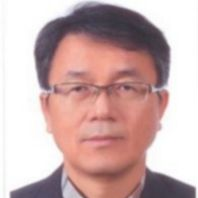Heavy Metal Determination and Removal
A special issue of Metals (ISSN 2075-4701).
Deadline for manuscript submissions: closed (30 September 2017) | Viewed by 42874
Special Issue Editors
Interests: adsorption of heavy metal ions in aqueous environment by using various advanced materials; wastewater treatment; green chemistry; environmental engineering; kinetic modeling; equilibrium
Interests: advanced oxidation processes (AOPs); graphene-like carbon; nanomaterial; micropollutants
Special Issues, Collections and Topics in MDPI journals
Special Issue Information
Dear Colleagues,
The pollution of heavy metals is a special concern due to their non-biodegradability, persistence and tendency to accumulate in the environment. The presence of even trace amounts of heavy metal results in high volumes of contaminated water which possibly cause adverse effects to human health and other living organisms. Several techniques have been reported for the removal of toxic heavy metal ions from aqueous solutions. Some of the methods are costly and inefficient in controlling the toxicity levels in wastewater, and all traditional techniques have advantages and disadvantages in terms of their effectiveness, cost, and environmental impact. Alternatively, the traditional methods developed for the determination of heavy metal are expensive instruments, and fail to meet the requirement of being portable for onsite analysis. Therefore, the development of efficient and cost effective material or a new technique for the detection and removal of heavy metal remains a challenging task for environmentalists. This Special Issue aims to present the latest research related to advanced techniques for the determination of heavy metal, and the development of a sustainable system for the removal of toxic metals from contaminated water. Research reports associated with the determination and removal of heavy metal from soil are also welcome.
Prof. Seung-Mok Lee
Prof. Jae-Kyu Yang
Prof. Diwakar Tiwari
Guest Editor
Manuscript Submission Information
Manuscripts should be submitted online at www.mdpi.com by registering and logging in to this website. Once you are registered, click here to go to the submission form. Manuscripts can be submitted until the deadline. All submissions that pass pre-check are peer-reviewed. Accepted papers will be published continuously in the journal (as soon as accepted) and will be listed together on the special issue website. Research articles, review articles as well as short communications are invited. For planned papers, a title and short abstract (about 100 words) can be sent to the Editorial Office for announcement on this website.
Submitted manuscripts should not have been published previously, nor be under consideration for publication elsewhere (except conference proceedings papers). All manuscripts are thoroughly refereed through a single-blind peer-review process. A guide for authors and other relevant information for submission of manuscripts is available on the Instructions for Authors page. Metals is an international peer-reviewed open access monthly journal published by MDPI.
Please visit the Instructions for Authors page before submitting a manuscript. The Article Processing Charge (APC) for publication in this open access journal is 2600 CHF (Swiss Francs). Submitted papers should be well formatted and use good English. Authors may use MDPI's English editing service prior to publication or during author revisions.
Keywords
- Heavy metal
- Arsenic
- Heavy metal ions detection
- Electrochemical sensor
- Stripping voltammetry
- Cyclic voltammetry
- Bioremediation
- Chemical precipitation
- Ion exchange
- Adsorption
- Membrane filtration
- Coagulation and flocculation






